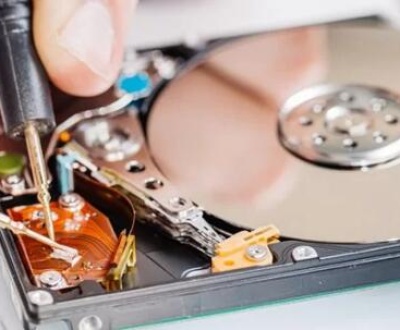Write protection on an external hard drive can be frustrating, especially when you need to add or modify files.
1. Write Protection
Write protection prevents data from being written to or modified on a storage device. This can be a hardware feature or a software setting. Understanding its cause is crucial in determining the right approach for removal.
2. Common Causes of Write Protection
Physical Lock: Some external drives have a physical switch that enables write protection.
File System Issues: Corrupted file systems can trigger write protection.
User Permissions: Incorrect permissions can prevent file modifications.
Malware: Certain malware can impose write protection to safeguard itself.

3. Initial Troubleshooting Steps
Before diving into more complex solutions, follow these basic troubleshooting steps:
Check for Physical Switch: Inspect the drive for any physical locks or switches.
Test with Different Ports/Cables: Sometimes, a faulty connection can cause issues.
Connect to Another Computer: This helps determine if the problem lies with the drive or the computer.
4. Removing Write Protection on Windows
4.1 Method 1: Check Disk Properties
Connect your external hard drive to your computer.
Open File Explorer, right-click the drive, and select Properties.
Navigate to the Security tab. Ensure your user account has Full Control.
If permissions need adjusting, click Edit, select your account, and check Full Control.
4.2 Method 2: Using Diskpart
Diskpart is a powerful command-line utility that can modify drive properties.
Press Windows + R, type cmd, and press Enter to open Command Prompt.
Type diskpart and press Enter.
Type list disk to view all connected drives.
Identify your external hard drive by its size and type select disk X (replace X with your disk number).
Type attributes disk clear readonly and press Enter.
Exit Diskpart by typing exit.
4.3 Method 3: Editing the Windows Registry
Caution: Editing the registry can cause system issues if done incorrectly. Always back up the registry before making changes.
Press Windows + R, type regedit, and press Enter.
Navigate to HKEY_LOCAL_MACHINE\SYSTEM\CurrentControlSet\Control\StorageDevicePolicies.
If the StorageDevicePolicies key doesn’t exist, create it:
Right-click Control, select New > Key, and name it StorageDevicePolicies.
Right-click in the right pane, select New > DWORD (32-bit) Value, and name it WriteProtect.
Set its value to 0 to disable write protection.
Restart your computer.
4.4 Method 4: Run the CHKDSK Utility
Running the Check Disk utility can fix file system errors that might cause write protection.
Open Command Prompt as an administrator.
Type chkdsk X: /f (replace X with your drive letter) and press Enter.
Follow the prompts to allow the utility to scan and fix errors.
5. Removing Write Protection on macOS
5.1 Method 1: Check Disk Utility
Connect the external hard drive and open Disk Utility (Applications > Utilities).
Select your external drive from the sidebar.
Click First Aid and then Run to check for errors and repair the disk.
5.2 Method 2: Adjust Permissions
Right-click the external drive and select Get Info.
At the bottom, check the Sharing & Permissions section.
Ensure your user account has Read & Write access. If not, click the lock icon to make changes.
5.3 Method 3: Terminal Command
Using the Terminal can also help remove write protection.
Open Terminal (Applications > Utilities).
Type diskutil list and press Enter to view all disks.
Identify your external drive and note its identifier (e.g., disk2).
Type sudo diskutil unmountDisk /dev/diskX (replace X with your disk identifier) to unmount the drive.
Next, type sudo chmod -R 777 /Volumes/YourDriveName (replace YourDriveName with your drive’s name) to change permissions.
Finally, remount the disk with sudo diskutil mountDisk /dev/diskX.
6. Using Third-Party Software
If the built-in methods do not work, consider using third-party software for additional control over your external hard drive:
EaseUS Partition Master: This tool allows you to manage partitions and can help remove write protection.
AOMEI Partition Assistant: A user-friendly tool for partition management that also addresses write protection.
7. Dealing with Malware Issues
If you suspect malware is causing write protection, run a full system scan:
Use reliable antivirus software like Malwarebytes or Bitdefender.
Once the scan is complete, follow the prompts to quarantine or remove any detected threats.
8. Reformatting the Drive
If all else fails, reformatting the drive will remove write protection but also erase all data. Make sure to back up important files first.
Windows:
Open File Explorer, right-click the drive, and select Format.
Choose the file system (NTFS, FAT32. exFAT) and click Start.
macOS:
Open Disk Utility, select the drive, and click Erase.
Choose the format and confirm.
9. Further Reading and Resources
For additional information and advanced troubleshooting, consider the following resources:
Microsoft Support: Guides on using Diskpart and resolving drive issues.
Apple Support: Information on Disk Utility and macOS file management.
Tech Forums: Communities like Reddit and Stack Overflow can provide insights from users facing similar issues.
About us and this blog
Panda Assistant is built on the latest data recovery algorithms, ensuring that no file is too damaged, too lost, or too corrupted to be recovered.
Request a free quote
We believe that data recovery shouldn’t be a daunting task. That’s why we’ve designed Panda Assistant to be as easy to use as it is powerful. With a few clicks, you can initiate a scan, preview recoverable files, and restore your data all within a matter of minutes.
Subscribe to our newsletter!
More from our blog
See all postsRecent Posts
- Data recovery salt lake city utah 2025-04-18
- Data recovery sacramento 2025-04-18
- Data recovery miami 2025-04-18

 Try lt Free
Try lt Free Recovery success rate of up to
Recovery success rate of up to









